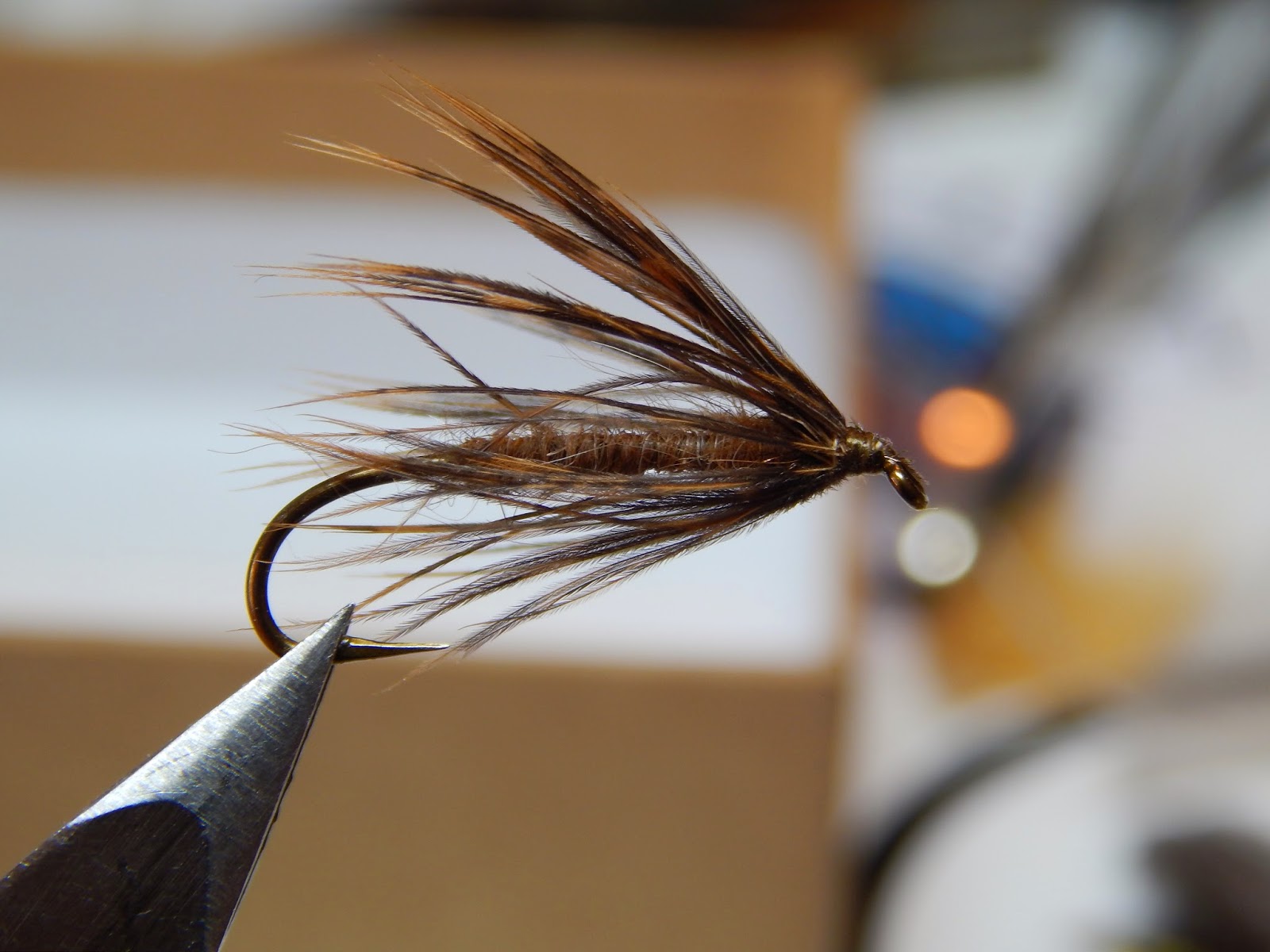I received an interesting e-mail from a angler about a fly and some success he has been having. He asked me if I had ever fished a fly called a "Ausable Ugly", to be honest I have never heard any thing about the fly. He said it had been producing very well for him on wild brook trout. I looked up the fly and it has that unmistakeable look of an Adirondack fly. The fly was similar to a wooly bugger. It had a bead head and was a buggy looking specimen.
He said that the fly was much better than the soft hackles he had been previously using. I suggested the reason for the fly being so effective was the fact that the bead was allowing the fly to get down near the bottom where the brookies were feeding. I said to him that I thought that the streams temperature has been running colder than normal, and the trout were slow to look up. Give the water a few weeks to warm a bit and the table will be set higher... and the soft hackles and dries shall dominate in the small streams.
While these flies do not incorporate a brass bead they are still weighted. I use a under wrap of non-lead wire which brings the fly down.
The Ausable Ugly with a hair cut.
These flies have a lot of Jack Gartside about them.



I have used the Ausable Ugly for smallmouth and brown trout. I've never even thought to try it for brookies.
ReplyDeleteRM Lytle,
DeleteThanks.
To be honest I never heard of it until the other day. Looks like a good fly.
Those are nice ties. I think my fish down here in FL would go for those. Can you share the recipes, please? The recent pictures are beautiful. I can only imagine the sights and sounds and being amongst them in person. Thank you for sharing!
ReplyDeleteJ Hayes,
DeleteThanks.
I will post the recipes soon. These flies are pretty generic. They can represent many forms of food so they would be pretty good for use on various fish.
Those sights and sounds are very easy on the mind.
J Hayes, here are the recipes.
DeletePattern #1.....Body a few wraps of non lead wire, then opossum dubbing..... Hackle, pheasant feather wrapped in like you would a soft hackle. Thread brown.
Pattern #2....Body, a few wraps of non lead wire,.....6 or so pheasant tail fibers, used for the tail then wrapped forward and tied off, then peacock herl. Wing is squirrel and pheasant feather wrapped as a soft hackle. Thread yellow.
Pattern #3....Tail marabou,..Body non lead, then peacock herl....hackle, pheasant wrapped as soft hackle.
Alan
ReplyDeleteI like the fact that you used the weighted body instead of the bead; personally I prefer the weighted body as oppose to the bead head. The fly becomes much more realistic without the bead. Thanks for sharing
Bill Trussell,
DeleteThanks.
Bill I think the bead has another purpose besides adding weight. I think an insect when moving from a nymph to an emerger traps air to allow it to move up in the water. The bead acts like that bubble of air.
Definitely an interesting fly. Do you think with the hackle swept back so far makes it less effective than a regular soft hackled fly? I could see the hackle laying completely flat against the body.
ReplyDeleteKiwi,
DeleteThanks.
Chris, You are right that the fly does not move through the water like a conventional soft hackle. The hackle hold tight to the body and gives it bulk in its silhouette. A some what large head / shoulder and a tapered body.
I've used an ugly a bit, I think it was last year when I bumbled into it after doing a google search for "Fran Betters". Good fly. That said, I like your modifications and versions more. They look very fishy. Your last comment though, man that hit's home. Gartside was an absolutely amazing fly creator and fisherman. His approach created so many great adaptations... and not just in fresh water. He created amazingly flies for fish from trout to bass to all salt water species. That guy, was a fly fishing genius!
ReplyDeleteHibernation,
DeleteThanks.
Jack's creativity in fly creation is just awesome. He liked using the pheasant for many of his flies.
He also used cigarette filters as dubbing.
I'd be really curious if anyone has fished these out west? If so, whether they worked or not.
ReplyDeleteHoward Levett,
DeleteThanks.
I would say that these flies would work well where ever fished. Like most flies all that's needed is for the angler to keep fishing them.
Alan
ReplyDeleteGlad you explained the bead, I thought it was used mainly for weight, now I know the true meaning; one learns something everyday about this great sport. Thanks
P.S. landed trout today on the Soft Hackle, some of my best rainbows on the tailrace
Bill Trussell,
DeleteThanks.
Bill I truly learn something new everyday, especially from the fish.
Glad the flies worked for you....waiting for a report.
Alan, beautiful flies you've tied there! I know you're right about the weight. Good inspiration here.
ReplyDeleteThe ugly can be fished dead drift as a nymph, which often gets attention on the first cast to any pool... after which short pulses of the rod tip create very life-like action. So versatile - a nymph and a streamer in one.